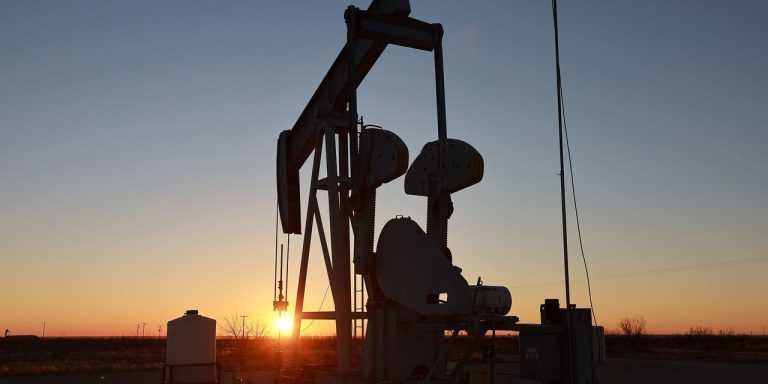An earlier version of this article cited an incorrect closing level for natural gas. The article has been corrected.
Oil futures rose toward their 2023 highs Friday, posting a sixth straight weekly gain a day after Saudi Arabia and Russia said they would extend supply cuts.
Price action
-
West Texas Intermediate crude for September delivery
CL00,
-0.68% CL.1,
-0.68% CLU23,
-0.68%
rose $1.27, or 1.6%, to finish at $82.82 a barrel on the New York Mercantile Exchange, contributing to a weekly gain of 2.8%. -
October Brent crude
BRN00,
-0.63% BRNV23,
-0.63% ,
the global benchmark, settled at $86.24 a barrel, up $1.10, or 1.3% on ICE Futures Europe. Brent saw a weekly gain of 2.2%. -
Back on Nymex, September gasoline
RBU23,
+1.14%
rose 0.7% to $2.783 a gallon, but suffered a weekly loss of 3.6%. September heating oil
HOU23,
-0.05%
fell 0.4% to $3.062 a gallon, posting a 3.8% weekly jump. -
September natural gas
NGU23,
+4.62%
rose 0.5% to close at $2.577 per million British thermal units, leaving a 2.3% weekly decline.
Market drivers
WTI saw its highest close since April 12, while Brent closed at its highest since April 14. Oil ended the week on a positive note, recovering from a Wednesday stumble that followed a Fitch Ratings cut of the U.S. sovereign credit rating to AA+ from AAA that dented market sentiment. Crude regained its footing after Saudi Arabia on Thursday said it would extend a 1 million barrel-a-day cut in production through September and warned that the reduction could be extended, deepened, or both.
Russia also said it would curb exports by 300,000 barrels a day through September.
On Friday, OPEC+’s Joint Ministerial Monitoring Committee, as expected, recommended no changes to the group’s output levels.
Existing supply cuts by OPEC+ have fed a roughly $10 a barrel rise by Brent since the beginning of July, with output by the 10 members of the group bound by quotas falling from 23.4 million barrels per day, or bpd, in June to 22.6 million bpd in July, Edward Gardner, commodities economist at Capital Economics, said in a note.
The move was mostly the result of Saudi Arabia’s 1 million barrel-a-day cut, which first took effect on July 1.
“Going forward, we forecast that Brent will end the year at around $85 per barrel. After all, OPEC+ appears committed to limiting supply. We also forecast a 2% y/y (year over year) increase in global oil demand” in the second half of 2023, Gardner said.
Brent is unlikely to rise much above $85 a barrel, however, because an increase in global inventories in the first half of the should help to compensate for the supply shortfall in the second half, Gardner wrote, noting that U.S. inventories remain up year to date and China appears to have been stockpiling crude.
Oil-field-services company Baker Hughes on Friday said the number of U.S. oil rigs fell this week by 4 to 525. That’s down 73 from a year ago.
Read the full article here









